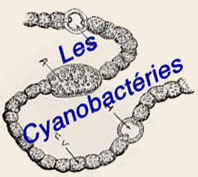2. Criteria for liquid cultures
2.1. Growth type
2.1.1. Colonial
Shape
Round: Circular.
Irregular: Having no definable shape.
Fingerlike: Forms vertical threads of mucilaginous material.
Penicillate: Brush-like growth away from the center of the colony.
Aspect
Fluffy: Cotton-like colonies.
Compact: Dense growth with little mucilage.
Mucilaginous:
2.1.2. Mat
Cohesive: Does not desaggregate when flask is swirled three times
Incohesive: Desaggregates when flask is swirled three times
2.1.3. Other types
Homogeneous: Even distribution of cyanobacterial material throughout the medium.
Flocculent: Uneven distribution of cyanobacterial material throughout the medium.
Aggregative sedimentary: Forms small, dense aggregates that accumulate at the bottom of the flask.
2.2. Growth location
Floating: Growing at the surface of the medium.
Adpressed: Growth adhering to the surface of the flask.
Both floating and adpressed
2.3. Color of the cyanobacterial material
The color is defined by the combination of three descriptors:
Intensity: light, medium, or dark.
Modifier: greenish, yellowish, bluish, or reddish.
Base color: green or brown.
2.4. . Color of the medium:
The color results from the diffusion of water-soluble pigments (e.g., phycocyanins, phycoerythrins) or other substances.
Four cases are distinguished: none, red/pink, yellow, and brown.
1. Criteria for solid cultures
2. Criteria for liquid cultures 3. Microscopic description
|

















